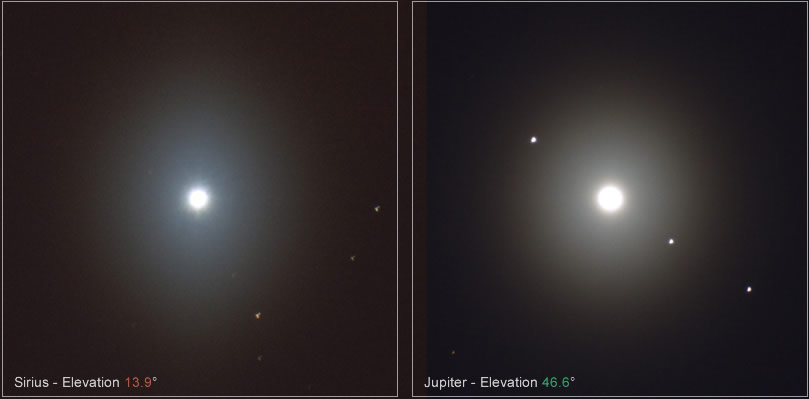Oval & not so oval aureoles
Peter Rosen of Stockholm generously answered my plea for near simultaneous images of aureoles around stars or planets at high and low altitudes.
At left is Sirius, low in the sky. At right is Jupiter and its moons half way to the zenith.
The Sirius aureole is more elongated than Jupiter's. Mouse over the image for intensity contours.
Why do this?
Aureoles (see also thumbnails below) are formed by small objects, water droplets, ice crystals, aerosol, dust and even pollen, diffracting sunlight. When the particles are fairly uniform sized the aureole develops into a multi-ringed corona.
Most aureoles are circular. Mysteriously, some small aureoles around bright planets are vertically elongated. That implies that the diffracting objects are horizontally elongated - they are certainly not water droplets and the aureoles are the wrong size to be from airborne pollen.
A possibility is that the diffractors are oriented plate or column shaped ice crystals, the type that also form halos. These crystals appear, on average, to be horizontally elongated to sun or starlight from near the horizon. But, on average, they look symmetrical when illuminated by near vertical rays. Their aureoles around stars or planets should therefore be vertically elongated near the horizon changing to circular near the zenith.
Peter Rosen's images support this hypothesis.
More observations and analyses are needed - but it is good to see a prediction confirmed.
Images were taken with a Canon EOS5D MkII (full frame) mounted on a WO FLT-110 refractor with a 4x TeleVue Powermate.
Images ©Peter Rosen, shown with permission.
|



